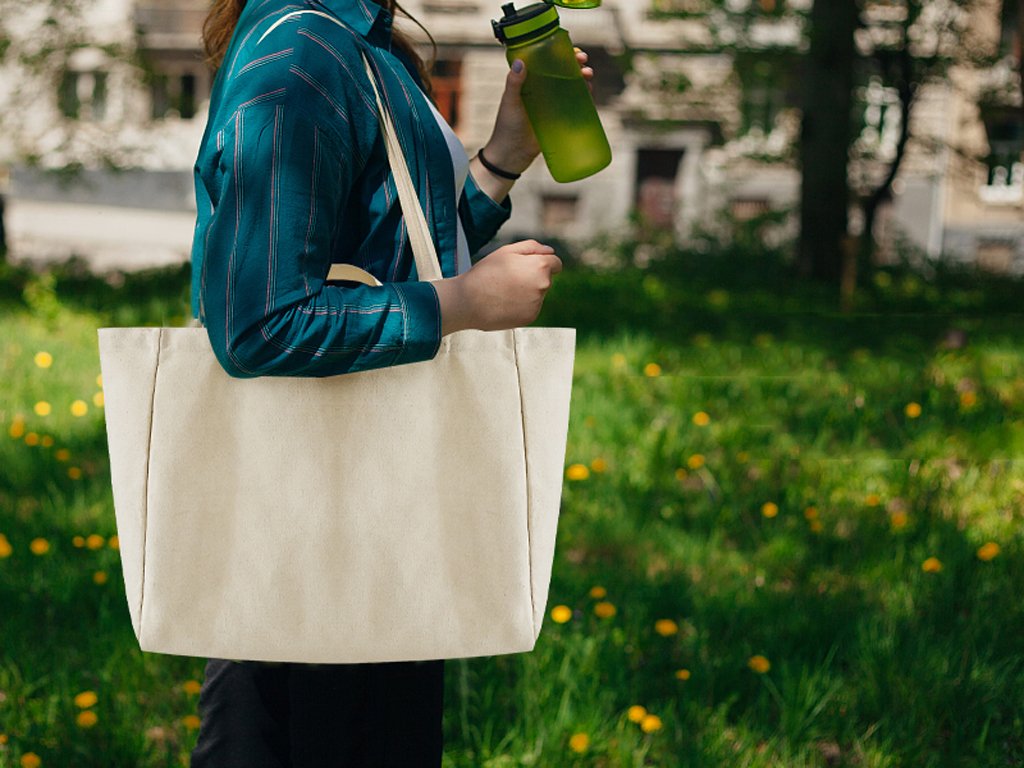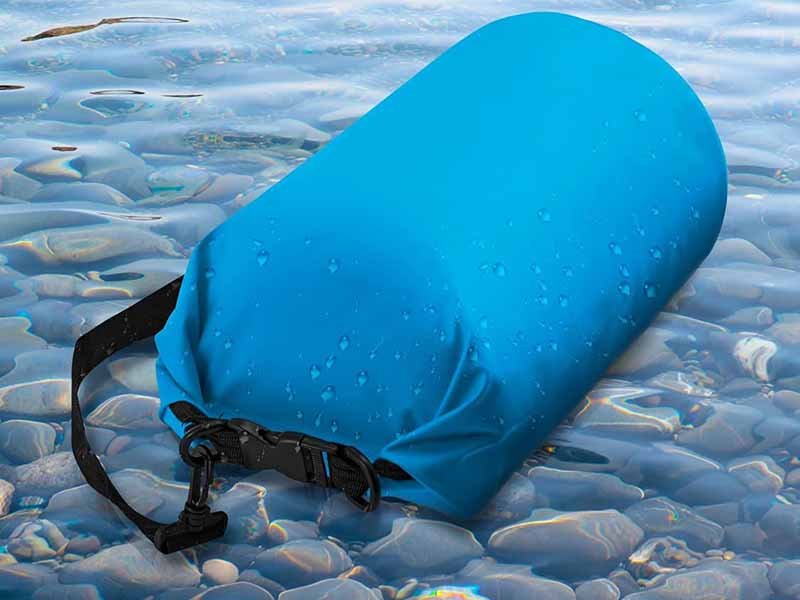In recent years, tote bags have gained prominence as essential accessories, appreciated for their remarkable versatility and user-friendly design. Their straightforward structure allows for effortless personalization, enabling individuals to showcase their unique style. Whether opting for bespoke designs or selecting from an array of branded options, these bags serve as fashionable yet environmentally conscious choices. The adaptability of tote bags is evident in their ability to complement both casual and formal attire, making them suitable for various events.
Available in a plethora of sizes and crafted from robust, wearable materials such as canvas, tote bags cater to a multitude of needs. their spacious interiors provide ample room for everyday essentials, making them ideal for shopping, work, travel, and more. Additionally, the durability of canvas ensures longevity, offering a sustainable alternative to single-use plastics.
For those interested in a more personalized approach, making a tote bag at home can be a rewarding project. With basic sewing skills and a few materials, one can create a unique accessory that reflects personal taste and creativity. From selecting the fabric to adding custom embellishments, the process of crafting a tote bag offers endless possibilities for innovation and self-expression.
What is a Tote? – The Definitive Manual for The Best Tote Bags

A tote is essentially a large bag designed for carrying numerous items, characterized by a wide open top. By definition, a tote bag is any bag of varying dimensions that typically features a pair of parallel handles on each side, without additional fasteners. The primary function of a tote bag is to serve as a convenient carryall, particularly useful on busy days filled with shopping or running errands.
A canvas tote bag, specifically, is made from a sturdy fabric woven from cotton or linen. This durable material is commonly used for sails, tents, backpacks, and other similar items. notably, canvas is also the preferred surface for artists as the foundation for their creations.
The History of the Totes

Tote bags, which originated in the 17th century, have undergone a fascinating evolution. The term “tote,” meaning “to carry,” only became widely recognized in the 1900s. In the United States, tote bags gained significant traction in 1944 when a leading apparel company introduced the now-iconic Boat Bag. Originally designed to transport ice during outings, this bag, made from durable canvas material, has remained largely unchanged and continues to be a testament to timeless design.
The widespread adoption of tote bags can be attributed to American housewives in the 1950s, who integrated these bags into their daily routines for running errands and completing chores. This practical use eventually transitioned into the realm of fashion in the 1960s. Designers such as Bonnie Cashin capitalized on the tote’s practicality, transforming it into an elegant accessory. This period also saw intellectual circles embracing the tote bag, notably when The Strand bookstore in New York City introduced its own version of the classic tote, blending functionality with cultural cachet.
Today, tote bags are not only practical but also fashion-forward and environmentally friendly. They are available in a wide variety of colors, patterns, and prints, often featuring subtle political messages or pop culture icons. The adaptability of the canvas material allows for extensive customization, making it possible for individuals to tailor their tote bags to reflect personal style and preferences.
High-end versions of tote bags now grace fashion runways globally, especially during Fashion Week, where they are celebrated as luxury items. These modern interpretations highlight the tote’s journey from a simple utility item to a sophisticated fashion statement. The evolution of the tote bag underscores its versatility and enduring appeal, cementing its place as a staple in both everyday use and high fashion.
Is the tote bag still in style in 2024?

Tote bags are still in style in 2024. they continue to be practical, fashion-forward, and environmentally friendly. Tote bags are available in a wide variety of colors, patterns, and prints, often featuring subtle political messages or pop culture icons. The adaptability of the canvas material allows for extensive customization, making it possible for individuals to tailor their tote bags to reflect personal style and preferences. High-end versions of tote bags now grace fashion runways globally, especially during Fashion Week, where they are celebrated as luxury items. These modern interpretations highlight the tote’s journey from a simple utility item to a sophisticated fashion statement. The evolution of the tote bag underscores its versatility and enduring appeal, cementing its place as a staple in both everyday use and high fashion.
What is a Tote Made of?
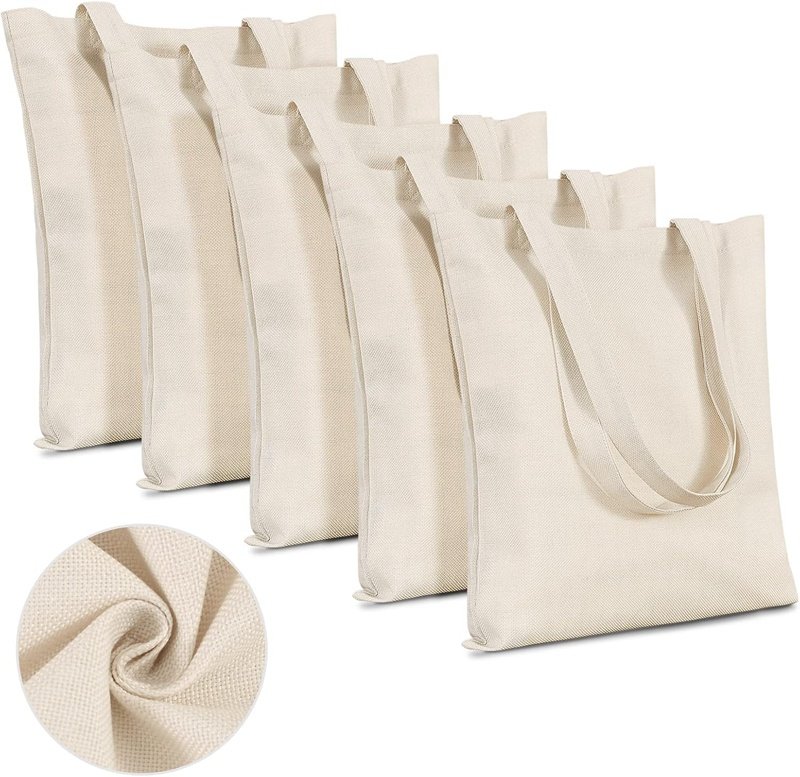
Tote bags are frequently constructed from cotton or linen, though hemp has also been a historically favored material. It is crucial to understand that “canvas” refers to the type of weave rather than the specific material of the fabric. For example, a tightly woven canvas is known as duck canvas. The materials used in canvas fabrics include cotton, derived from the cotton plant, and linen, sourced from the flax plant. Although less common today, hemp, derived from the cannabis plant, was once a popular choice for making canvas.
Canvas fabric has been utilized for centuries in various applications, including sails, tents, and as a base for paintings. Its durability and adaptability make it ideal for these uses. When treated with a waterproof coating, canvas becomes highly resistant to moisture, ensuring its functionality in diverse weather conditions. This characteristic also makes canvas an excellent material for tote bags, as it can withstand regular use and exposure to the elements.
One of the significant advantages of canvas for custom tote bags is its flexibility. The material is lightweight yet sturdy, providing a perfect balance between strength and convenience. Additionally, canvas holds ink from prints remarkably well, allowing for intricate and vibrant designs without issues of bleeding or flaking. This makes canvas tote bags not only practical but also highly customizable, catering to individual preferences and stylistic choices.
From an environmental perspective, canvas materials are naturally sourced, making them a sustainable option. Cotton, linen, and hemp are all renewable resources that have a lower environmental impact compared to synthetic materials. The reusability of canvas tote bags further contributes to environmental sustainability by reducing the need for disposable bags and minimizing waste production. As consumers become more eco-conscious, the demand for reusable, durable, and environmentally friendly tote bags continues to rise.
How are A Tote Bag Made?
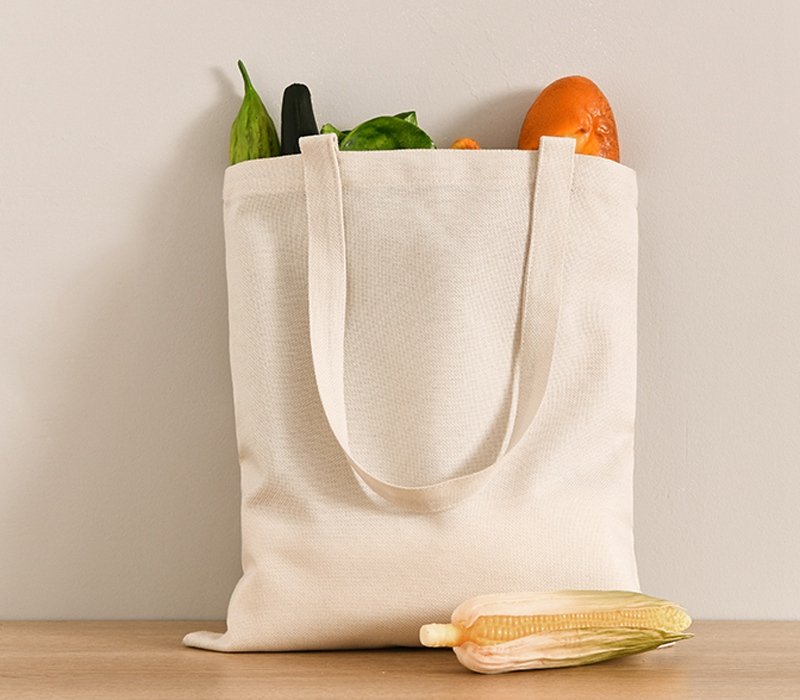
Making a tote bag is a straightforward process. Here is a detailed step-by-step guide to help you create your own tote bag:
Materials and Tools:
To start, gather the necessary tools and materials. You will need:
- Scissors
- Pins
- Ruler
- Seam ripper
- Fabric chalk
- Sewing machine
- 1 meter of fabric
Instructions:
- Cut a 33” x 31” piece from your fabric.
- Fold the fabric in half, creating a piece that measures 16 ½” x 15 ½” with the fold at the bottom.
Step Two: Making the Straps
- From the leftover fabric, cut two 16” long strips for the handles. You can use the same fabric or substitute it with a different sturdy material if preferred.
Step Three: Preparing the Top Edges
- Fold down the top open edges of the folded fabric by 1 inch on both sides.
- Pin these folds in place.
- Sew 0.5 mm from the edge, ensuring you double stitch at the beginning and end for durability.
- Remove the pins after sewing.
Step Four: Sewing the Sides
- Pin the sides of the bag together, ensuring the edges align evenly.
- Sew 1 mm from the edge of the fabric to close the sides.
Step Five: Creating the Gusset
- To give the bag more volume, sew across the corners to form a gusset.
- Pinch the corners of the bag open, using the 1 mm of free edge space.
- Pin these corners and sew approximately 3” across both bottom corners. This will create dog-ear-like corners, adding depth to the bag.
Step Six: Attaching the Straps
- Measure 4” from each end of the straps, so each handle sits 4” from the closest edge of the bag.
- Align the edges of the straps with the 1” folds at the top of the bag and pin them in place.
Step Seven: Securing the Straps
- Sew around all four edges of each strap to form a square with the thread.
- Sew diagonal lines connecting the corners of the square, forming an “X” in the middle. This reinforces the straps, ensuring they can bear weight.
- Repeat this for all four strap ends.
Step Eight: Finishing Touches
- Trim any loose threads and check that all stitches are secure.
- Turn the bag inside out to reveal your new blank tote bag.
Step Nine: Decorating Your Tote
Now that you have a blank canvas, you can decorate your tote to reflect your personal style:
- Fabric markers or iron-on decals are great options for decorating.
- Alternatively, you can use printed fabric to avoid additional decorating steps.
What are the conventional weight of canvas fabric that is used in canvas tote bag?
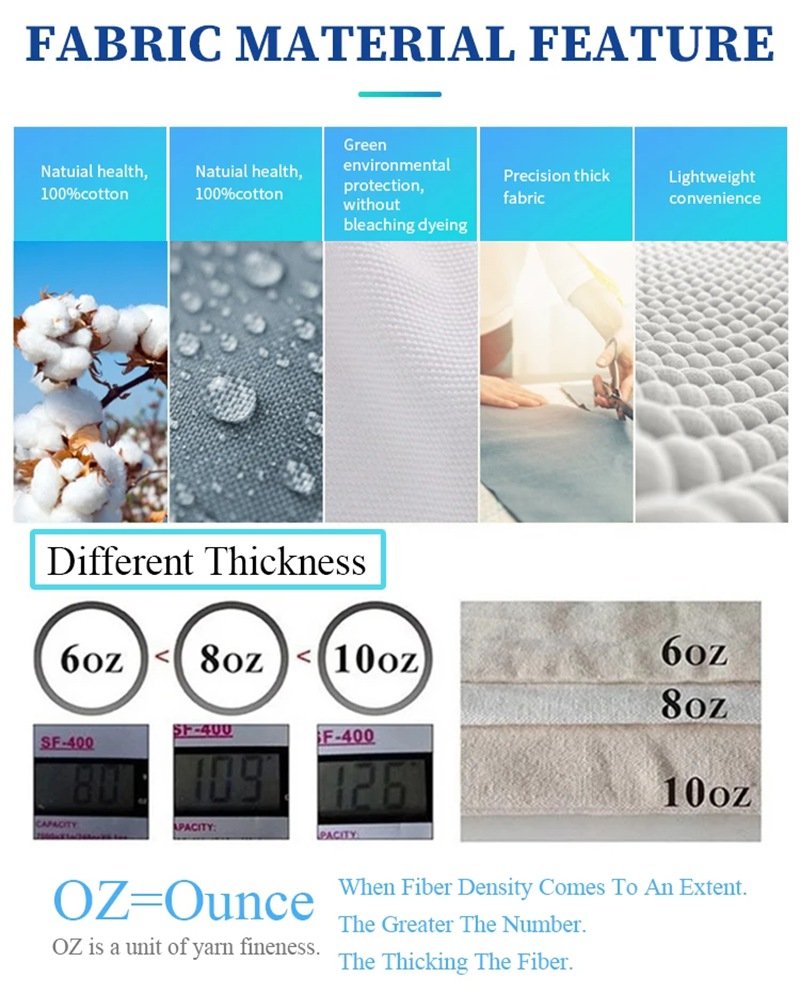
The conventional weight of canvas fabric used in canvas tote bags typically ranges between 6 ounces (oz) to 24 ounces (oz) per square yard. The weight of the canvas fabric is a crucial factor in determining the durability, sturdiness, and overall feel of the tote bag.
Common Canvas Weights for Tote Bags:
- 6 oz to 8 oz:
- Lightweight Canvas: These are often used for more casual tote bags, promotional items, or bags intended for lighter loads. They are flexible and easier to fold, making them convenient for everyday use.
- 10 oz to 12 oz:
- Medium-Weight Canvas: This is the most common weight range for tote bags. It offers a good balance between durability and flexibility, suitable for carrying groceries, books, and other everyday items.
- 14 oz to 16 oz:
- Heavyweight Canvas: Used for sturdier tote bags that need to carry heavier loads. These bags are more durable and can handle rougher use, making them ideal for shopping, beach outings, or as reusable grocery bags.
- 18 oz to 24 oz:
- Extra Heavyweight Canvas: These are less common for standard tote bags but are used for specialized bags that require extra durability and strength, such as industrial or tool bags. They are the most robust and can carry very heavy items without tearing.
What is the difference between 5 oz, 6 oz, 8oz,10 oz, 12 oz 16oz canvas material?

Canvas material weights, ranging from 5 oz to 16 oz per square yard, vary significantly in terms of thickness, durability, and suitability for different applications. Lighter weights like 5 oz and 6 oz are thin and flexible, ideal for lightweight tote bags and promotional items. 8 oz and 10 oz canvas are medium-weight options offering a balance between durability and flexibility, commonly used for everyday tote bags and reusable shopping bags. Moving up to 12 oz and 16 oz canvas, these are heavyweight materials, thick and highly durable, suitable for heavy-duty tote bags, backpacks, and industrial applications where strength and longevity are crucial. Choosing the appropriate canvas weight depends on the intended use, with lighter weights for casual and promotional items, and heavier weights for more robust and demanding applications.
What is GSM in Tote bags and how is GMS calculated?
GSM (Grams per Square Meter) is a metric used to measure the weight and thickness of fabric. It indicates how many grams a square meter of the fabric weighs. The higher the GSM, the heavier and thicker the fabric.
The calculation of GSM is straightforward:
- Weigh a sample of the fabric in grams.
- Measure the area of the sample in square meters.
- Divide the weight by the area to get the GSM.
For example, if a piece of fabric weighing 150 grams covers 0.5 square meters, the GSM would be 300 (150 grams / 0.5 square meters).
This measurement helps in determining the durability, thickness, and suitability of the fabric for different applications, such as tote bags.
What is the difference between cotton and canvas tote bag?
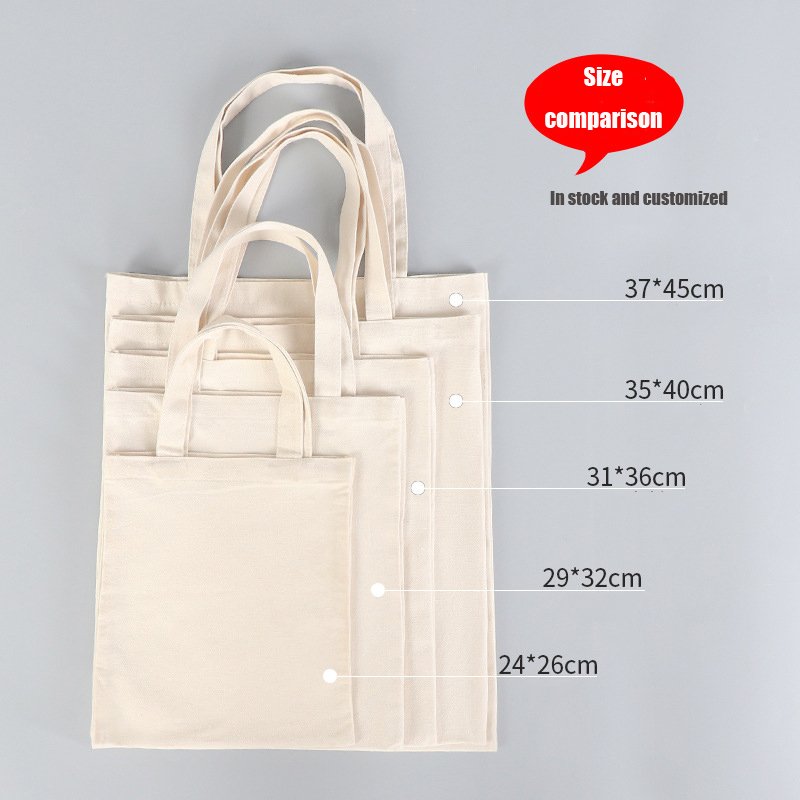
Plain cotton tote bags are lightweight, usually between 4 oz and 6 oz, which makes them convenient for light-duty use such as shopping or carrying essentials temporarily. They excel in heat transfer applications, retaining designs well due to cotton’s heat resistance up to 350 degrees Fahrenheit. Cotton’s softness and penetrability by needles also make it suitable for embroidery and detailed threadwork. However, their lightweight nature means they are less durable and require gentler handling to avoid damage.
In contrast, Canvas is a fabric typically woven from cotton using a specialized process that results in a sturdier texture compared to plain cotton bags. While canvas can also be made from other materials, its dense weave makes it particularly durable, capable of handling heavier loads without tearing during prolonged use. This durability makes canvas tote bags ideal for carrying items over extended periods, whether for errands or day-to-day activities. They are also well-suited for applications like iron-on logos, screen printing, and heat transfers, which adhere effectively to the canvas surface. Canvas tote bags typically range in weight from 8 oz to 24 oz, with popular choices being 10 oz and 12 oz.
Choosing between canvas and cotton tote bags depends on the intended use. Cotton tote bags are economical, environmentally friendly due to reusability, and suitable for lighter tasks. On the other hand, canvas tote bags offer superior durability and longevity, making them the preferred choice for sustained use and heavier loads.
Read more things about them: What is The Difference Between Canvas Tote Bags And Cotton Tote Bags ?
Are tote bags waterproof?
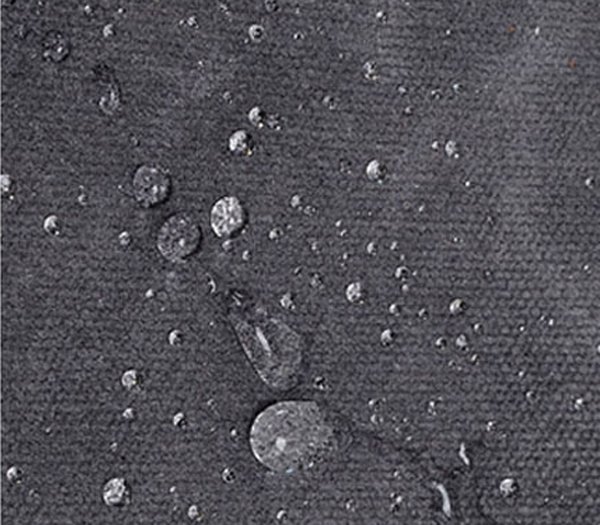
While many commercially purchased tote bags come pre-treated for waterproofing, DIY projects and more affordable options often lack this feature. Waterproof tote bags offer significant advantages, especially in protecting your belongings from water damage, making them a worthwhile investment compared to non-waterproof alternatives. One effective method to waterproof your tote bag, such as a drawstring tote, is by applying wax. This simple technique enhances the bag’s weather resistance, ensuring your items remain dry and protected even in rainy conditions.
How to Wax Your Bag?

Waxing a bag at home to achieve waterproofing requires careful preparation and execution for optimal results. Begin by ensuring the bag is clean and free of loose threads and debris, either through washing (if machine washable) or vacuuming. It’s crucial that the material is completely dry before proceeding. Set up your workspace in a well-ventilated area like a yard or garage to mitigate the strong scent of the wax.
Gather the necessary materials: a lump of wax (such as a mix of paraffin and beeswax or organic wax), two pots (one for boiling water and one to melt the wax), a cup of water, a paintbrush, and a hairdryer.
Step-by-Step Process:
1.Spot Test: Confirm the wax’s compatibility with your canvas tote by applying it to an inconspicuous area inside the bag. Note that the material may darken slightly after waxing.
2.Prepare Wax: Create a double boiler by boiling water in one pot and placing the wax in another pot inside it. Stir occasionally with a wooden stick until the wax melts completely. Allow it to cool briefly to avoid damaging the canvas.
3.Apply Wax: Use the paintbrush to spread the warm wax evenly over the canvas surface. Ensure each stroke thoroughly coats the fabric, paying special attention to seams, crevices, folds, and around any embellishments or zippers. Expect a slight darkening of the canvas.
4.Work into Fabric: Use your fingers to work the wax into the fabric, ensuring it bonds well and protects the material.
5.Heat and Reapply: Use a hairdryer to heat the wax again, allowing it to penetrate deeper into the fabric for enhanced waterproofing. Apply a second coat if needed, focusing on the bag’s bottom and considering waterproofing the bag’s interior if carrying liquids. This process will make the bag stiffer but more durable.
6.Dry the Bag: Hang the bag in a dry, well-ventilated area for one to two days to allow the wax to fully dry and air out. Alternatively, place the bag in an old pillowcase and tumble dry on low heat for 15 to 30 minutes to expedite drying and remove excess odor from the wax.
It’s important to note that the wax coating is not permanent and may need reapplication annually for continued waterproofing. Care for your waxed bag by avoiding hot water when cleaning; instead, use a soft brush with natural bristles or hand wash with cold water to maintain its integrity and prolong its waterproofing effectiveness.
Where Can You Buy a Tote Bag?
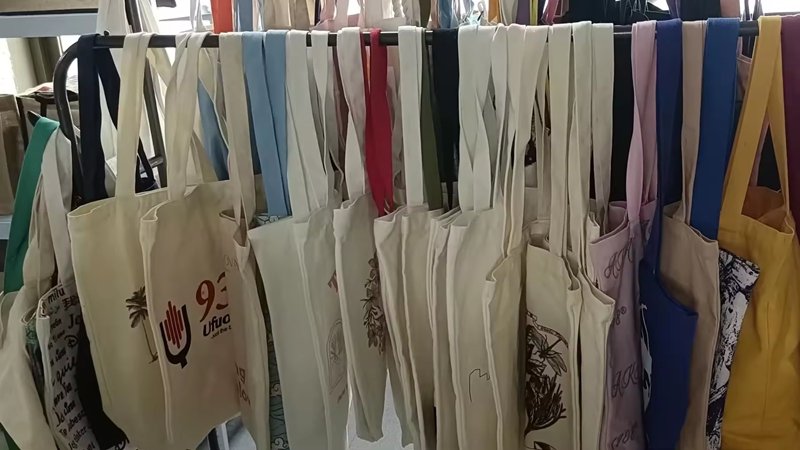
Tote bags are readily accessible from numerous retailers both in-store and online, offering a wide range of styles and customization options. Websites like szoneier.com, a leading supplier based in China, offer extensive selections of tote bags suitable for various needs and preferences. customization choices abound, allowing customers to personalize their bags with collegiate themes, sports motifs, classic monograms, logos, and more, ensuring each tote serves as a unique and personalized accessory reflecting individual style and preferences.
Read More:Your Trusted Custom Tote Bags Manufacturer
How long do tote bag last?
The lifespan of a tote bag largely depends on the materials used and how often it is used. Generally, high-quality canvas tote bags can last for several years if they are well-made and properly cared for. Factors that influence the longevity include: Material quality: Durable fabrics like heavy-duty canvas or reinforced polyester can prolong the life of the tote bag. Construction: Strong stitching and quality hardware, such as zippers and handles, enhance durability. Usage: Frequent and heavy use will wear out the bag faster compared to occasional use. Care: Regular cleaning and avoiding overloading can help maintain the bag’s condition. With proper care, a good tote bag can last anywhere from 3 to 10 years.
How to Select the Right Size of The Totes for You?
Tote bags come in various sizes tailored to different needs and preferences. When selecting the right size, consider the largest item you intend to carry, whether it’s a notebook, laptop, or planner, and add a few inches for closure space. This ensures your belongings fit comfortably within the bag. Standard tote bag sizes are available to accommodate different purposes:
Large Tote Bag: Dimensions typically around 22″W x 15″H x 8″D, making it ideal for those who need ample space for multiple items. This oversized tote is perfect for beach trips, pool days, or overnight stays, offering plenty of room without the worry of running out of space.
Medium Tote Bag: Dimensions usually about 16″W x 15″H x 5″D, striking a balance between size and manageability. It’s versatile for casual outings and can transition seamlessly from day to night. While not as large as the oversized tote, it comfortably holds essentials for everyday activities like shopping or coffee outings.
Small Tote Bag: Dimensions typically around 12″W x 13″H x 4″D, designed for compact carrying of essentials such as a wallet, keys, and lipstick. This mini tote is perfect for evenings out or occasions where a lightweight, minimalist bag is preferred, such as carrying books, attending weddings, or as a thoughtful gift bag.
What are the Normal Handle Lengths of tote bags?
Handle lengths can significantly impact both the functionality and aesthetics of a tote bag. Here are some common handle types explained in detail:
1.Short Handles (Approximately 14″-18″ in length, 6″-8″ drop): These handles are designed for carrying by hand or at the crook of the elbow. While they can add a chic look to the bag, they are not suitable for carrying heavy items over long periods as they cannot be slung over the shoulder.
2.Standard Handles (Approximately 20″-22″ in length, 9″-11″ drop): This is the most versatile and commonly used handle length. They are long enough to be worn over the shoulder comfortably without slipping off, making them ideal for daily use.
3.Long Handles (Approximately 24″-26″ in length, 12″-13″ drop): These handles provide the most comfort for carrying over the shoulder or on the arm. They are often favored for their fashionable appearance and ease of use.
4.Handles with a Long Detachable Strap: This type offers versatility, allowing the bag to be carried by hand or worn across the body for heavier loads. This feature makes the tote bag adaptable to various carrying needs.
How to Custom Your Tote Bag-Ideas For Personalization
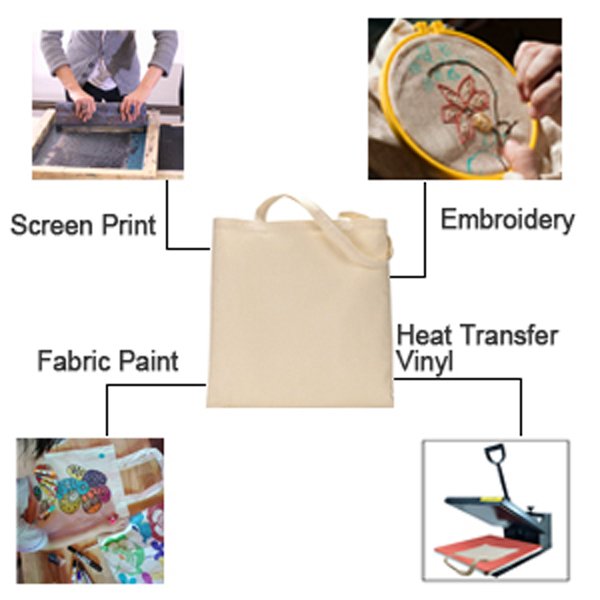
Canvas is an excellent material for holding various inks, making it versatile for numerous customization techniques on blank tote bags.
How to Create Silk Screen Images on Your Tote
Silk screen images, or screen prints, are achieved through a detailed process. You will need a silkscreen frame, emulsion, acetate, ink, and the tote bag.
- Emulsion Coating: Evenly coat the silkscreen with emulsion using a trough. Ensure complete coverage and let it dry in a dark room for at least four hours.
- Image Preparation: Print your desired image onto acetate. For simpler designs, you can cut the shape from plain paper.
- Image Transfer: Position the acetate image and the silkscreen on an exposure unit to transfer the image onto the screen.
- Screen Washing: Rinse the exposed screen with water to reveal the transferred image. Allow the screen to dry completely.
- Canvas Preparation: Stretch the canvas flat and secure it in place. Clamp the screen onto the canvas, ensuring the image is properly aligned.
- Ink Application: Apply ink generously over the screen and spread it evenly using a squeegee, ensuring full coverage of the canvas.
- Drying and Finishing: Allow the ink to dry for about 30 minutes. Once dry, your customized tote is ready to showcase!
How to Do Heat Transfer on a Bag
Heat transfer is a straightforward technique, requiring pre-cut vinyl designs and an iron.
- Workspace Preparation: Choose a flat, heat-resistant surface, such as a wooden desk. Position the vinyl design on the canvas in your desired layout and cover it with a thin cotton sheet.
- Heat Application: Press a heated iron evenly over the vinyl design for 30 seconds. Allow the canvas to cool slightly, then check if the vinyl has adhered properly. Repeat if necessary.
- Final Touch: Peel off the clear plastic layer, leaving the vinyl design firmly imprinted on the canvas.
How to Do Embroidery on a Canvas Bag
Canvas is a suitable fabric for embroidery, easily penetrated by a needle. Basic supplies include thread, a needle, and optionally, an embroidery hoop. Sketching your design with a washable fabric marker can be helpful.
How to Paint Your Canvas Tote Bag
Using fabric paint is an accessible method for personalizing canvas tote bags. Choose fabric paints and brushes from craft stores. Simply paint your design directly onto the canvas for a unique touch.
Read more: How To Paint On Canvas Tote Bags Step Guide
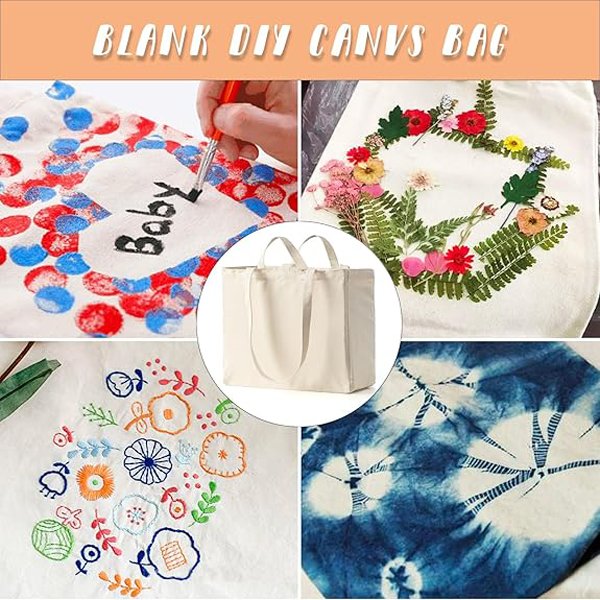
How to Repair Your Tote Bag?
With regular use, tote bags may suffer wear and tear, requiring occasional repairs. Here are some effective methods to address common issues:
Repairing the Handle of a Tote Bag:
If the handle of your tote bag rips, it suggests that you have been carrying heavier loads than the bag was designed for. Depending on the extent of the damage, the handle can be fixed with fabric glue or by sewing. Fabric glue is a temporary solution and may require you to lighten the bag’s load. For a more durable fix, sturdy stitching is recommended, which can restore the bag to its full functionality.
Repairing Holes in a Tote:
To mend holes in a tote, you can sew the edges back together or apply a patch if the hole is too large to stitch closed. When selecting patch material, choose one that is thicker and at least an inch larger in diameter than the hole. Turn the bag inside out, place the patch over the tear, and ensure it completely covers the damaged area. You can secure the patch using heavy-duty fabric glue or by sewing it in place.
Repairing a Bag’s Zipper:
Zippers can be tricky, but they need to be replaced if the zipper separates from the teeth. For a stuck zipper, apply a lubricant such as soap, lotion, or lip balm to the teeth to restore mobility. If the slider no longer holds the teeth together, you may need to replace it. Remove the old slider with pliers, and slide a new one onto the teeth. If the zipper pull is missing but the tab remains, you can attach a paperclip or key ring through the hole to create a makeshift pull.
Repairing a Bag’s Pocket:
If a pocket has a hole, you can simply stitch it closed, using a patch if necessary. If the pocket is coming off, reattach it with needle and thread or use fabric glue for bonding.
Repairing the Interior Lining of a Tote Bag:
To fix holes in the interior lining, start by pulling the lining out by opening the bottom seam. Place a patch over the hole and sew it in place. Then, sew the seam shut again. Alternatively, if you prefer not to sew, you can attach an exterior patch to the lining using fabric glue.
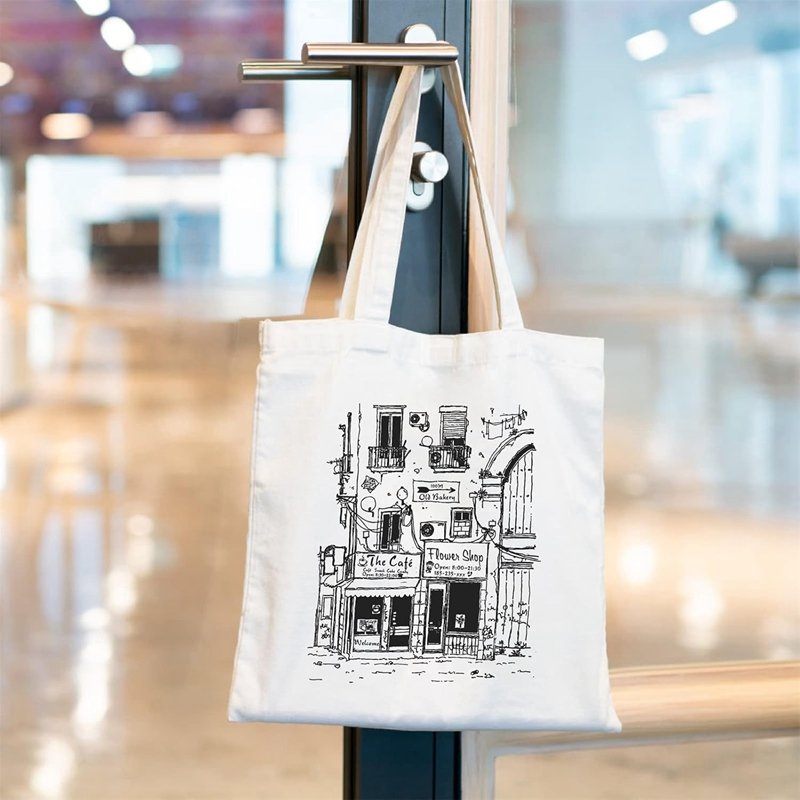
How to Clean Wash And Care For Your Tote Bag
Although the cleaning instructions for a tote bag are usually found on a tag inside the bag, extra caution is needed for bags with prints, embroidery, paint, or other attached decorations. Regardless of whether the bag is machine washable or requires hand washing, it’s safer to wash it in cool water.
Before washing, empty the bag completely. For any large stains on the exterior, treat them with a spot stain remover. Turn the bag inside out and check for any manufacturer care instructions. Plain bags can often be machine-washed with cold water, and some printed designs can also withstand machine washing. However, this does not apply to many fabric paints and delicate decorations. When in doubt, hand washing is the safest option.
To hand wash, start by immersing the entire bag in clean, lukewarm water. Wring out the excess water and gently scrub any dirt or debris using a soft-bristled brush or your fingers in a circular motion. Pay extra attention to problem areas, using a light detergent. Rinse thoroughly to remove all detergent residue. For drying, hang the bag on a clothesline to air dry. Avoid using a dryer, as it can cause shrinkage. Air drying helps the bag maintain its original size and shape.
Are Canvas Tote Bag Eco Friendly?
Canvas tote bags are celebrated for their environmental benefits, primarily because they are made from renewable resources. These bags are biodegradable, ensuring they break down naturally at the end of their life cycle. Their most eco-friendly feature is their reusability, which significantly reduces the reliance on harmful plastic bags that accumulate in landfills each year.
What is a Tote Bag Used For?

Here are the types of tote bags suitable for various occasions:
- Shopping: Ideal for using heavy-duty canvas bags or medium-weight canvas bags, which are strong and durable, capable of carrying heavier loads. Examples: grocery shopping bags, market shopping bags.
- Work or School: Suitable for medium-weight canvas bags or standard canvas bags, easily carrying books, laptops, and other essentials. Examples: work tote bags, student book bags.
- Travel: Large canvas bags or waterproof tote bags are perfect for short trips or as carry-on luggage, accommodating travel documents and snacks. Examples: vacation tote bags, travel carry-ons.
- Beach or Pool: Waterproof tote bags or large canvas bags are ideal for carrying towels, sunscreen, and other beach day essentials. Examples: beach bags, pool bags.
- Gym: Medium canvas bags or gym tote bags are great for carrying workout clothes, shoes, and accessories. Examples: gym tote bags, yoga bags.
- Everyday Use: Standard canvas bags or small canvas bags are suitable for daily errands and casual outings. Examples: everyday tote bags, casual tote bags.
- Picnics: Large canvas bags or compartmentalized tote bags are convenient for carrying food, drinks, and picnic supplies. Examples: picnic bags, outdoor tote bags.
- Library: Medium canvas bags or standard canvas bags are perfect for carrying books and other reading materials. Examples: library bags, book bags.
- Craft Projects: Standard canvas bags or small canvas bags are suitable for holding craft supplies and tools. Examples: craft tote bags, tool bags.
- Gifting: Small canvas bags or decorative tote bags can be used as reusable gift bags. Examples: gift bags, decorative tote bags.
- Conferences and Events: Standard canvas bags or custom tote bags are excellent for carrying promotional materials, notebooks, and other event essentials. Examples: conference tote bags, event-specific tote bags.
- Baby Bag: Large canvas bags or waterproof tote bags are suitable for carrying baby essentials such as diapers, bottles, and toys. Examples: baby tote bags, waterproof mommy bags.
Read More:
How Do Sublimation on Canvas Tote Bags Step Guide?
13 Ways to Decorate Your Blank Tote Bags
How To Paint On Canvas Tote Bags Step Guide?

